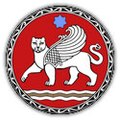Samarkand
Samarkand [1] It is the second-largest city in Uzbekistan and the capital of Samarqand Province.
 | |
| Coordinates: Coordinates: 39°39′15″N 66°57′35″E / 39.65417°N 66.95972°E | |
| Elevation | 702 m (2,303 ft) |
| Population | |
| • City | 596,300 |
| • Urban | 643,970 |
| • Metro | 708,000 |
| Website | http://www.samarkand.info |
The city is on the old Silk Road between China and the West, and is an Islamic centre for scholarly study. In the 14th century, it became the capital of the empire of Timur (Tamerlane), and is the site of his mausoleum, the Gur-e Amir. The Bibi-Khanym Mosque remains one of the city's most famous landmarks. The Registan was the ancient centre of the city.
Most of the inhabitants of this city are Persian-speaking and speak the Tajik Persian dialect. This city is one of the historical centers of the Tajik people in Central Asia, which in the past was one of the important cities of the great empires of Iran.[2]
In 2001, UNESCO added the 2,750-year-old city to its World Heritage Site list as Samarkand – Crossroads of Cultures.
History
Samarkand is one of the oldest inhabited cities in the world, prospering from its location on the trade route between China and the Mediterranean (Silk Road). At times Samarkand has been one of the greatest cities of Central Asia.
Started about 700 BC by the Persians, Samarkand has been one of the main centres of Persian civilization from its early days. Maracanda was the ancient Greek name for it Alexander the Great conquered the city in 329 BC.
Medieval history
At the start of the 8th century, Samarkand came under Arab control. Under Abbasid rule, the legend goes,[3] the secret of papermaking was learned from two Chinese prisoners in 751. This led to the first paper mill in the Islamic world being founded in Samarkand. The invention then spread to the rest of the Islamic world, and from there to Europe.
Samarkand was sacked by the Mongols under Genghis Khan in 1220. Some of the people survived, but later, Samarkand suffered at least one other Mongol attack. The town took many decades to recover from these disasters. In The Travels of Marco Polo, where Polo records his journey along the Silk Road, Samarkand is described as "a very large and splendid city..." He also writes about a Christian church in Samarkand, which miraculously remained standing after a portion of its central supporting column was removed.
In 1370, Timur the Lame, or Tamerlane, decided to make Samarkand the capital of his empire, stretching from India to Turkey. During the next 35 years, he built a new city and populated it with artisans and craftsmen from all of the places he had conquered. Timur gained a reputation as a patron of the arts, and Samarkand grew to have a population of about 150,000.[4]
Modern history
In 1499, the Uzbek Turks took control of Samarkand.[4] They moved the capital to Bukhara and Samarkand went into decline.[4] The city came under Russian rule in 1868. The Russian section of the city was built after this point, largely to the west of the old city.
The city later became the capital of the Samarkand Oblast of Russian Turkestan and grew in importance still further when the Trans-Caspian railway reached the city in 1888. It became the capital of the Uzbek SSR in 1925 before being replaced by Tashkent in 1930.
Samarkand Media
Alexander the Great Slaying Cleitus in Samarkand, by Daniël de Blieck.Ferens Art Gallery, Hull.
Turkic officers during an audience with king Varkhuman of Samarkand. 648–651 CE, Afrasiyab murals, Samarkand.
Coin of Sogdian ruler Turgar, last Ikhshid of Samarkand, Penjikent, 8th century CE, National Museum of Antiquities of Tajikistan.
Gold dinar of caliph al-Mu'tazz, minted at Samarkand in AH 253 (867 CE). His reign marks the apogee of the decline of the Caliphate's central authority
Many prominent astronomers worked at Ulugh Beg's observatory, which contained this mural sextant, constructed in Samarkand during the 15th century.
References
| Wikimedia Commons has media related to Lua error in Module:Commons_link at line 62: attempt to index field 'wikibase' (a nil value).. |
- ↑ Uzbek: Samarqand; Persian: سمرقند; Russian: Самарканд, means "Stone Fort" or "Rock Town"
- ↑ Poopak Niktalab, (2019), the Alleyways of Samarkand to the Mediterranean Coast (The Evolution of the World of Child and Adolescent Literature(in 33 countries), Faradid Published, Tehran, Iran.
- ↑ Quraishi S. 1989. A survey of the development of papermaking in Islamic Countries. Bookbinder. 29-36.
- ↑ 4.0 4.1 4.2 Columbia-Lippincott Gazeteer, p. 1657
![]()











